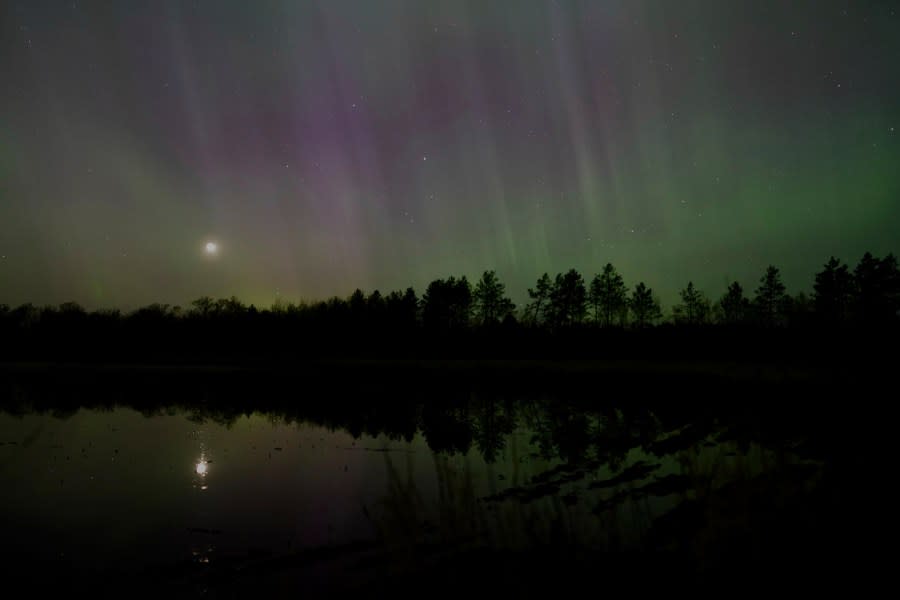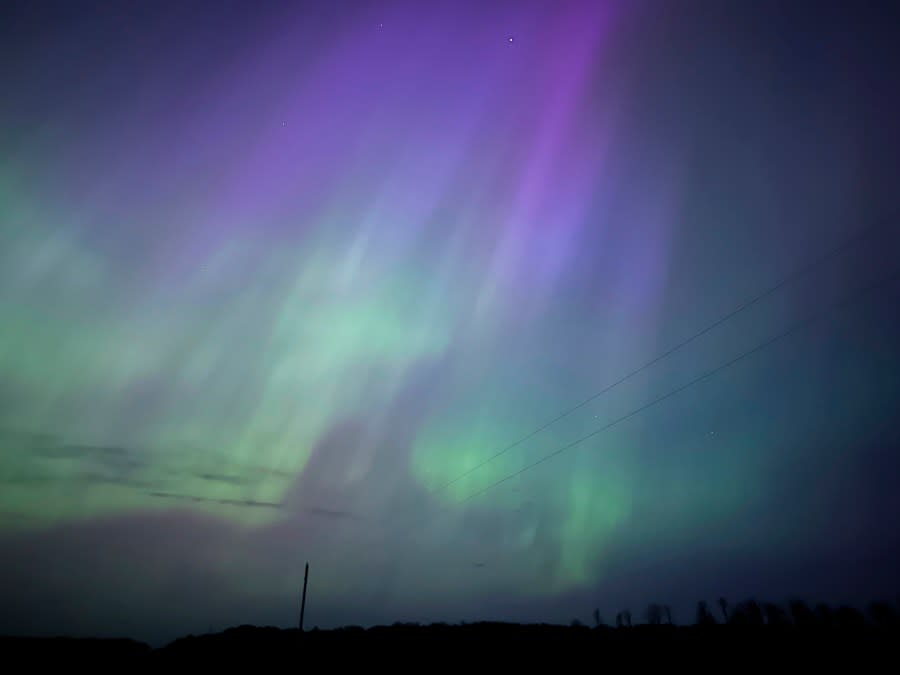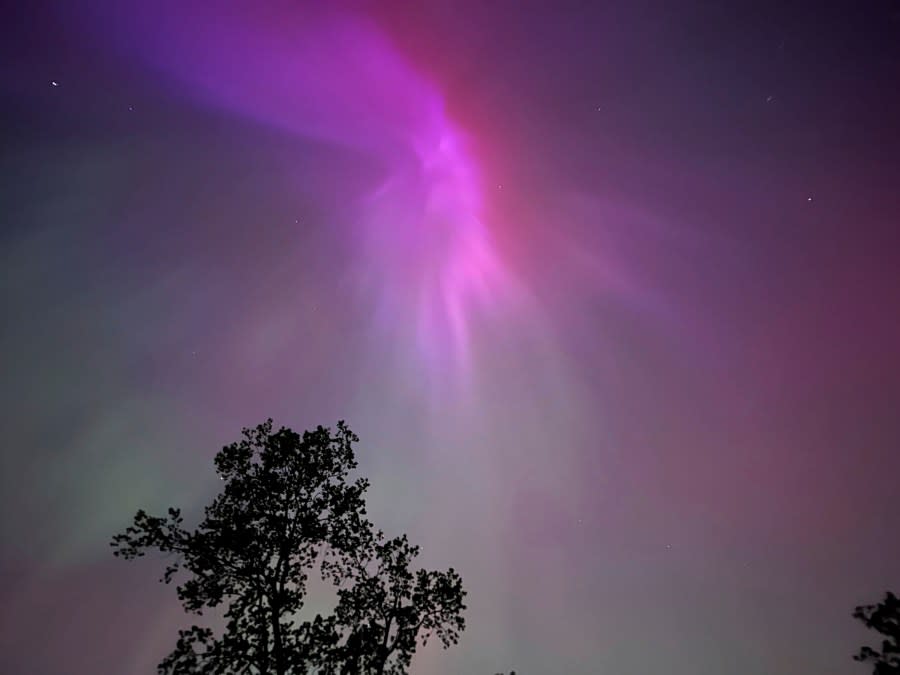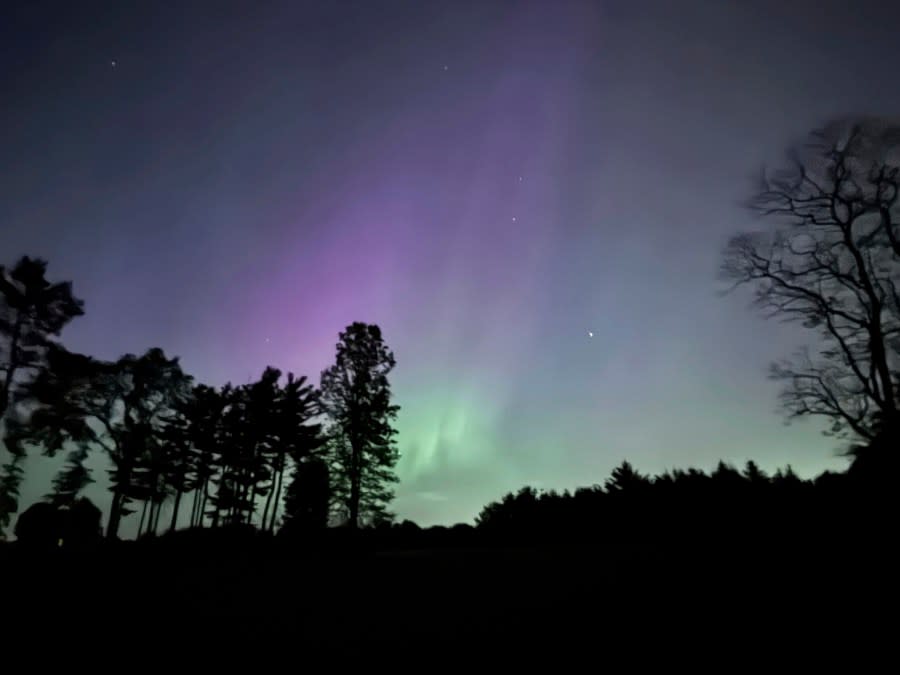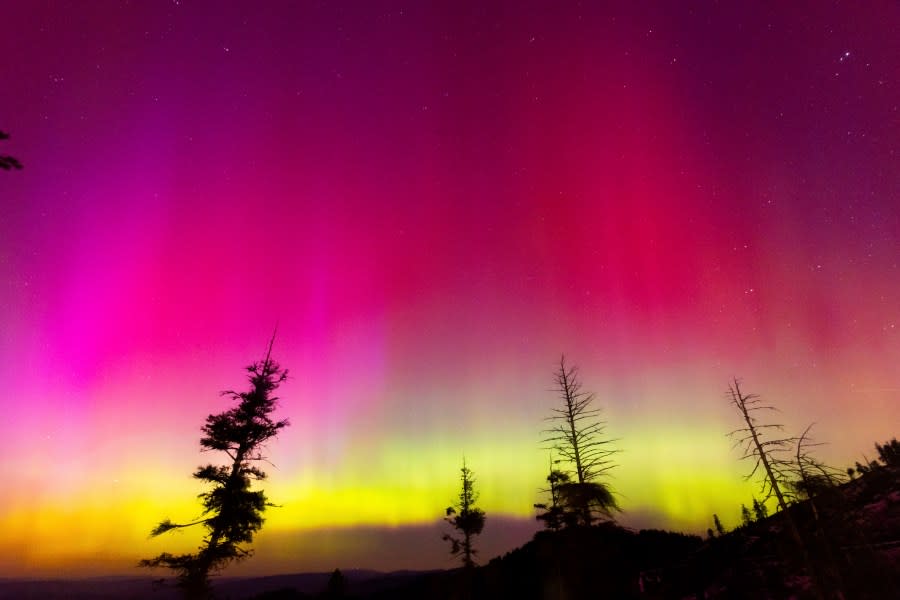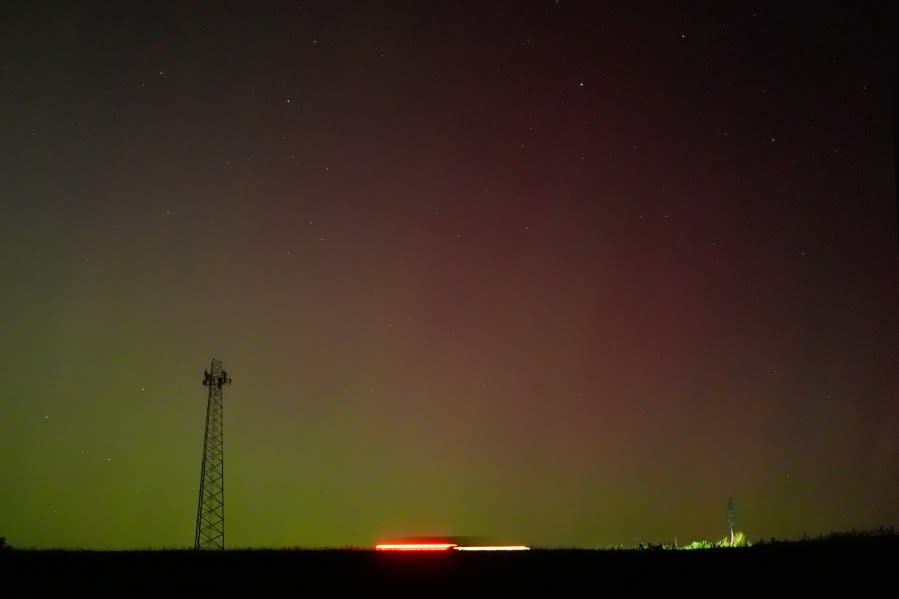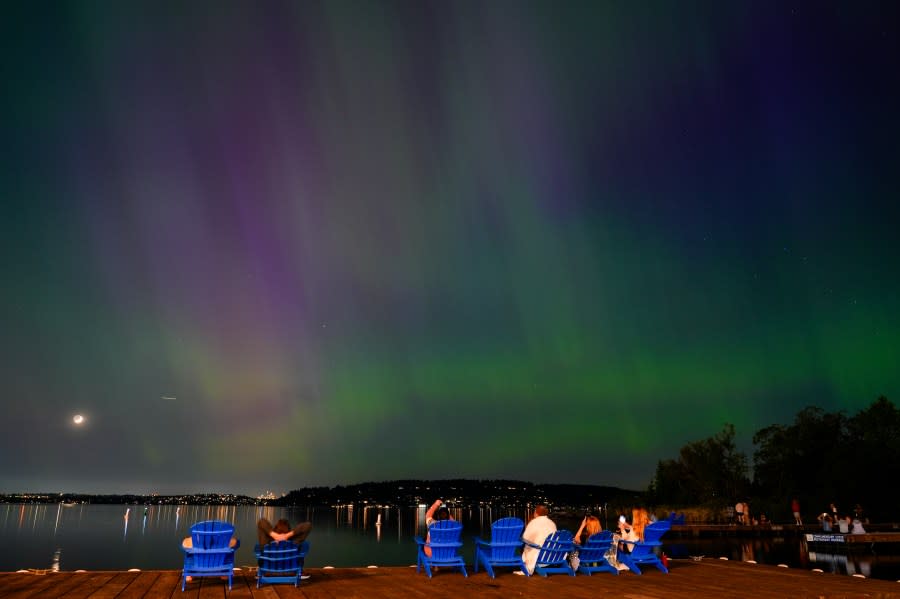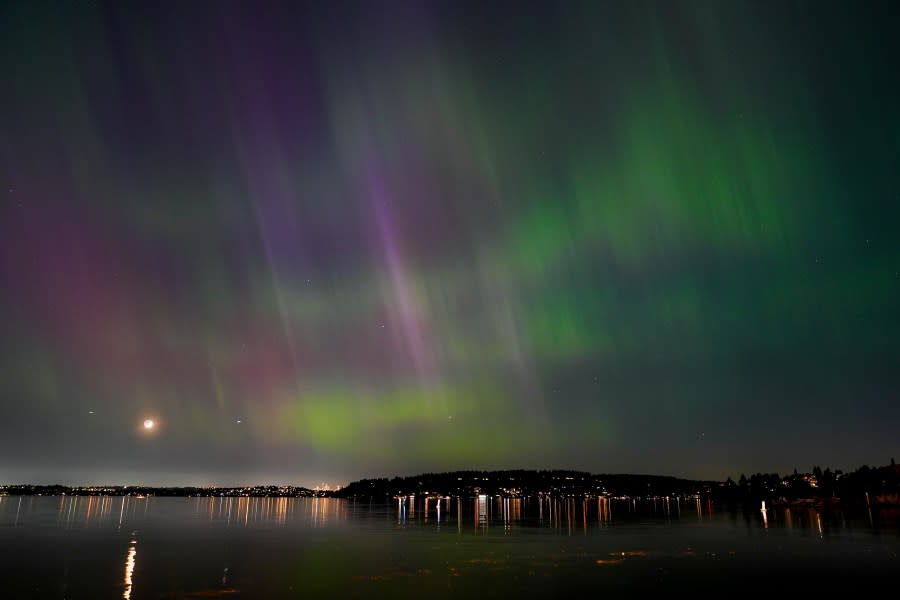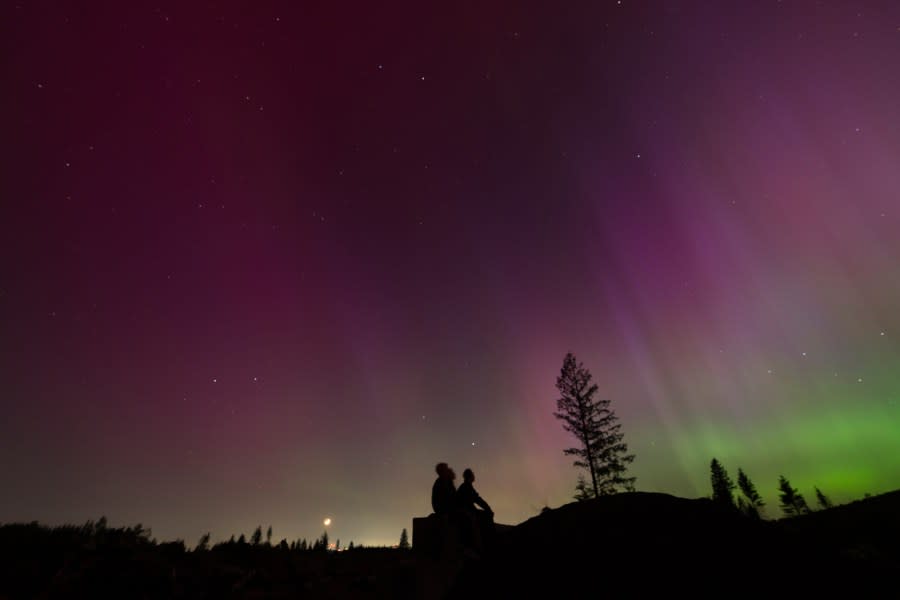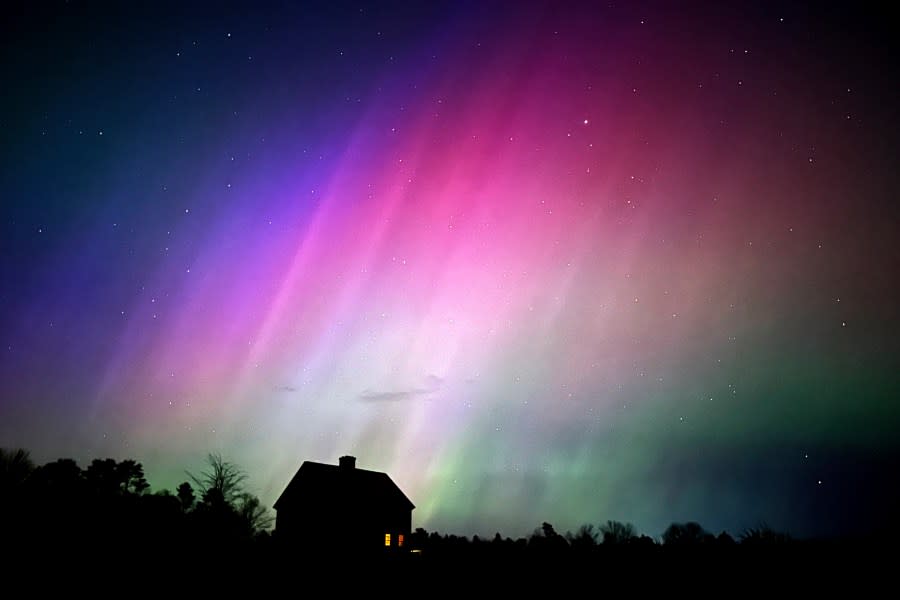Northern lights: What causes the colors that we see — and don’t see?
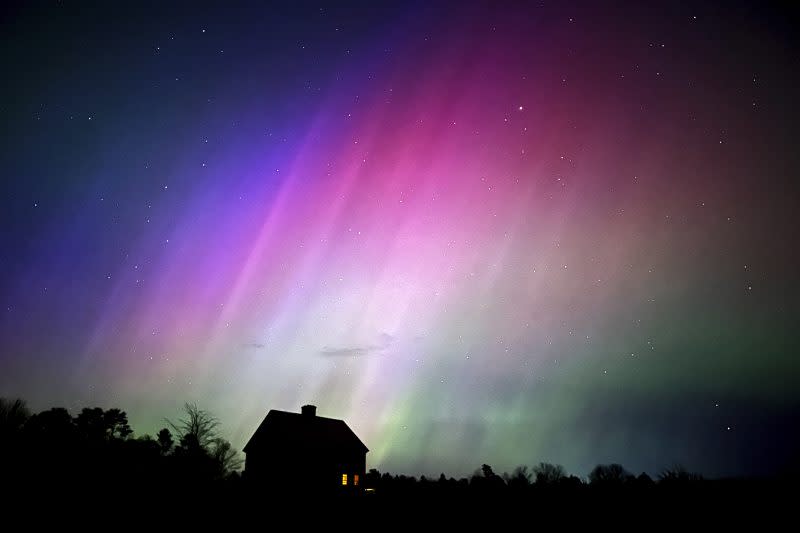
(NEXSTAR) — Amid a massive solar storm, Americans as far south as Hawaii, Florida, and Texas have had the chance to see the northern lights. For some, it’s the first time in nearly two decades that conditions aligned to bring the aurora to their night skies.
If you saw the northern lights — either with your own eyes or with the help of your phone — you may have noticed an array of colors. But what causes the different shades of greens, reds, blues, and purples? It’s all about what’s hitting our atmosphere, and what it’s interacting with.
Northern lights are sparked by coronal mass ejections, or explosions of plasma and magnetic material shooting out of the sun, colliding with Earth’s magnetic field. As those ejections, known as CMEs, smack into our magnetic field, currents send particles flowing to the North and South Poles.
Map: Will you see the northern lights again on Sunday?
Those particles will ultimately interact with the gases in our atmosphere: oxygen and nitrogen. The excess energy created by those interactions, according to NASA, will cause a burst of light which we see as the aurora.
What color we experience depends on which gases are involved and where it happens.
Green northern lights, the most common, occur when particles interact with oxygen between 75 and 110 miles in altitude. If oxygen and nitrogen are “excited by the incoming particles” at the same altitude, we can see blue aurora, NASA explains.
Slight lower, 60 miles and below, an interaction with nitrogen will cause pink northern lights. Above 120 miles, interactions with oxygen spark red aurora.
The northern lights glow in the sky over St. Croix State Forest near Markville, Minn., late Friday, May 10, 2024. (AP Photo/Mark Vancleave) Northern lights glow in the sky near Kroschel, Minn., late Friday, May 10, 2024. (Owen Caputo Sullivan via AP) The Aurora Borealis, also known as the Northern Lights, is visible over Ann Arbor, Mich., early Saturday, May, 11, 2024. (AP Photo/Dee-Ann Durbin) The Aurora Borealis, also known as the Northern Lights, is visible over Ann Arbor, Mich., early Saturday, May, 11, 2024. (AP Photo/Dee-Ann Durbin) The Northern lights fill the sky at the Bogus Basin ski resort on Saturday, May 11, 2024 in Boise, Idaho. (Kyle Green (AP Photo/Kyle Green) A communications tower is silhouetted against the northern lights Saturday, May 11, 2024, near St. Joseph, Mo. (AP Photo/Charlie Riedel) People take photos of the Northern Lights, or Aurora Borealis, as they glow over Lake Washington, in Renton, Wash., on Friday evening, May 10, 2024. (AP Photo/Lindsey Wasson) The northern lights, or aurora borealis, are visible over Lake Washington, in Renton, Wash., on Friday evening, May 10, 2024. (AP Photo/Lindsey Wasson) In this image taken with a long exposure, people look at the night sky towards the northern lights, or Aurora Borealis, on Friday, May 10, 2024, in Estacada, Ore. Brilliant purple, green, yellow and pink hues of the Northern Lights were reported worldwide, with sightings in Germany, Switzerland, London, and the United States and Canada. (AP Photo/Jenny Kane) The northern lights flare in the sky over a farmhouse, late Friday, May 10, 2024, in Brunswick, Maine. Brilliant purple, green, yellow and pink hues of the Northern Lights were reported worldwide, with sightings in Germany, Switzerland, London, and the United States and Canada. (AP Photo/Robert F. Bukaty)
Like mixing paint, when these colors blend, you may see purples, whites, and other shades of pink.
Our eyes aren’t always able to see the shimmering northern lights, even though we know they’re out there. However, your phone’s camera (as long as it’s newer) may capture it because they are often more sensitive than our eyes, Michael Bettwy, operations chief of NOAA’s Space Weather Prediction Center, said last week.
Solar storm 2024: What should you do to prepare?
“You may not be able to see it with your naked eye, but if you have a clear night with not that many clouds, and you put your phone to the sky, you may actually get an image or two,” Bettwy said.
Visit Iceland (where northern lights are visible more frequently) recommends adjusting your phone’s settings to get the best shots. Look for something like “night mode” or another way to lengthen the camera’s exposure to help capture more light. Using a tripod can also help keep your hands steady.
Alix Martichoux contributed to this report.
For the latest news, weather, sports, and streaming video, head to Queen City News.
